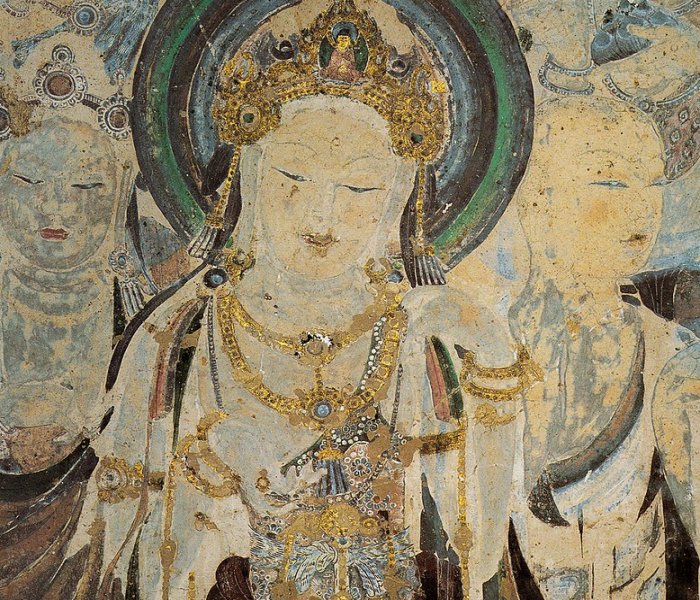Mogao Grottoes, Dunhuang, China – Fascinating Statues, Manuscripts And Wall Paintings
A. Sutherland - AncientPages.com - The Mogao Grottoes, near the oasis town of Dunhuang in the Gobi Desert, China are where generations of Buddhist monks built hundreds of rock temples.
Many believe that Dunhuang (the town's name means "blazing beacon") is probably the most important historical site in China. Nearly five hundred grottoes remain, lined with painted clay sculptures and wall paintings that depict legends, portraits, customs, and arts of China.
Mural of Avalokiteśvara (Guanyin), Worshipping Bodhisattvas and Mendicant in cave 57. Figures originally adorned with gold leaf. Early Tang. Image source
They were discovered at the beginning of the 20th century and over time they revealed an enormous treasure trove of Buddhist art in form of manuscripts, sculptures, painted scrolls, and wall paintings ranging in date from the 4th to the 14th centuries.
The cave temples preserve about 2,000 Buddhist sculptures, 45,000 square meters of murals, and more than 60,000 texts.
The figure of Maitreya Buddha in cave 275 from Northern Liang (397–439), one of the earliest caves. The crossed ankle figure with a three-disk crown shows influence from Kushan art. Image credit: Bairuilong - CC BY-SA 4.0
The Mogao Caves - tell a story of art and Buddhism that began more than 1,500 years ago.
Today, Princeton scholars and students - in collaboration with the Dunhuang Academy in China - are exploring the significance of the site in the history of China and this region.
Additionally, the site - the world’s largest repository of Buddhist paintings - also possesses many of China’s oldest Buddhist paintings. Ancient records say that in 366 CE, Buddhist monks began to carve the first caves into the cliff stretching about 1 mile along the Daquan River.
There is a beautiful story behind the creation of the "Caves of the Thousand Buddhas". It all started with a Buddhist monk Shamen Le Zun, who was traveling westwards towards Central Asia in search of the Buddhist truth.
One day, he had a vision of light and 1,000 Buddhas, which inspired him to carve the first cave in the middle of a desert oasis. After him, other monks joined him and carved their own caves; generations of Buddhist monks built hundreds of rock temples.
Mogao Cave 17 - This one-room cave temple was originally designed in the 9th century to memorialize the monk depicted in the statue, Hongbian, who died in the year 862. Photo courtesy of Dunhuang Academy
About 40 of them date from the Northern Wei-dynasty (385-557). More were added during the Sui-dynasty (581-618). Most of the caves were made during the Tang dynasty (until ca. 750), when Buddhism and the Silk Route were in their prime.
They are lined with painted clay sculptures and wall paintings that depict legends, portraits, customs, and arts of China. Caves in the complex came in every size. There were sleeping quarters, meditation niches, libraries, lecture halls, and halls to hold large ceremonies.
The text of this manuscript on karmic retribution contains dialogues illustrating the consequences in the next life of performing various deeds in this life. It is written in Old Uighur (or Old Turkish). The illustration depicts monks in prayer, a couple encircled by a serpent, and a sinner in flames. Credits: The East Asian Library and the Gest Collection, Princeton University
After 1000 AD, an incredible archive —with up to 50,000 documents, hundreds of paintings, together with textiles and other artifacts— had been sealed up in a chamber adjacent to one of the caves (Cave 17), perhaps to protect the contents from invading armies.
Its entrance was concealed behind a wall painting and the trove remained hidden from sight for centuries. In 1900, it was discovered by Wang Yuanlu, a Daoist monk who had appointed himself abbot and guardian of the cave temples. The first Western expedition to reach Dunhuang arrived in 1879.
More than twenty years later Hungarian-born Marc Aurel Stein, a British archaeologist, and explorer reached Dunhuang in 1907 and bought seven thousand complete manuscripts and six thousand in fragments, as well as several cases loaded with paintings, embroideries, and other artifacts.
Later others followed after him.
The wall paintings were done in dry fresco. The walls were prepared with a mixture of mud, straw, and reeds that were covered with a lime paste. The sculptures are constructed with a wooden armature, straw, reeds, and plaster.
The colors in the paintings and on the sculptures were done with mineral pigments as well as gold and silver leaf. All the Dunhuang caves face east.
Due to sandstorms and erosion, Mogao Caves are constantly in danger to be destroyed.
The beautiful interior of the caves can be admired - here.
Written by – A. Sutherland - AncientPages.com Senior Staff Writer
Copyright © AncientPages.com All rights reserved. This material may not be published, broadcast, rewritten or redistributed in whole or part without the express written permission of AncientPages.com
More From Ancient Pages
-
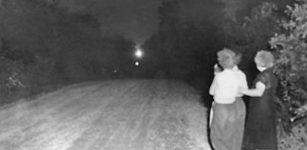 Mysterious Hornet Spook Light In Missouri
Featured Stories | Jun 26, 2024
Mysterious Hornet Spook Light In Missouri
Featured Stories | Jun 26, 2024 -
 Ruins Of 2,300-Year-Old City Of Jiaohe On The Silk Road
Civilizations | Aug 6, 2023
Ruins Of 2,300-Year-Old City Of Jiaohe On The Silk Road
Civilizations | Aug 6, 2023 -
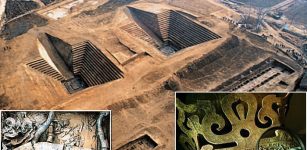 Mysterious Lost Civilization Of Chu And Its Powerful Kingdom
Civilizations | Nov 29, 2018
Mysterious Lost Civilization Of Chu And Its Powerful Kingdom
Civilizations | Nov 29, 2018 -
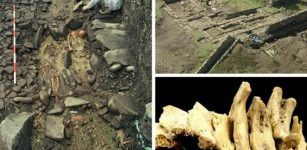 Isle Of May Was A Pictish Healing Center – Monks Used Herbs To Treat Sick And Dying People
Archaeology | Feb 16, 2018
Isle Of May Was A Pictish Healing Center – Monks Used Herbs To Treat Sick And Dying People
Archaeology | Feb 16, 2018 -
![Microscopy picture of a dividing basal radial glial cell, a progenitor cell type that generates neurons during brain development. Modern human TKTL1, but not Neandertal TKTL1, increases basal radial glia and neuron abundance. Credit: Pinson et al., Science 2022 / MPI-CBG Left: Microscopy picture of a dividing basal radial glial cell, a progenitor cell type that generates neurons during brain development. Modern human TKTL1, but not Neandertal TKTL1, increases basal radial glia and neuron abundance. [less] © Pinson et al., Science 2022 / MPI-CBG; Right: Anneline Pinson is a researcher in Wieland Huttner's group. © MPI-CBG](https://www.ancientpages.com/wp-content/uploads/2022/09/Brain12Neurons-307x150.jpg) Modern Humans Generate More Brain Neurons Than Neandertals
Human Beginnings | Sep 8, 2022
Modern Humans Generate More Brain Neurons Than Neandertals
Human Beginnings | Sep 8, 2022 -
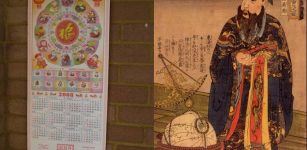 Ancient Chinese Tai Chu Calendar Was Defined By Emperor Han Wu
Ancient History Facts | Jun 3, 2019
Ancient Chinese Tai Chu Calendar Was Defined By Emperor Han Wu
Ancient History Facts | Jun 3, 2019 -
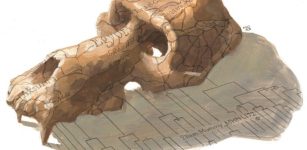 Can Baboons Solve The Ancient Mystery Of Punt?
Archaeology | Oct 25, 2023
Can Baboons Solve The Ancient Mystery Of Punt?
Archaeology | Oct 25, 2023 -
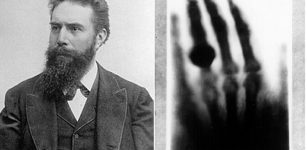 On This Day In History: Discovery Of X-Rays By Wilhelm Roentgen Reported – On Jan 5, 1896
News | Jan 5, 2017
On This Day In History: Discovery Of X-Rays By Wilhelm Roentgen Reported – On Jan 5, 1896
News | Jan 5, 2017 -
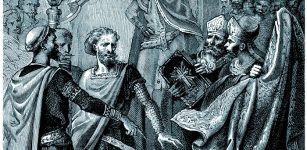 William The Conqueror: Ruthless And Powerful Ruler Who Changed Britain Forever
Featured Stories | Feb 25, 2023
William The Conqueror: Ruthless And Powerful Ruler Who Changed Britain Forever
Featured Stories | Feb 25, 2023 -
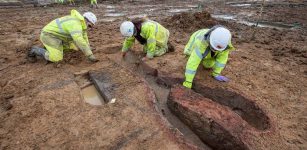 Discovered Roman Malting Oven Could Be Evidence Of 2,000-Year-Old Beer Production In The UK
Archaeology | Apr 4, 2022
Discovered Roman Malting Oven Could Be Evidence Of 2,000-Year-Old Beer Production In The UK
Archaeology | Apr 4, 2022 -
 Unusual Medieval Picture Stone Found Under House In Klotzow, Germany
Archaeology | Aug 26, 2024
Unusual Medieval Picture Stone Found Under House In Klotzow, Germany
Archaeology | Aug 26, 2024 -
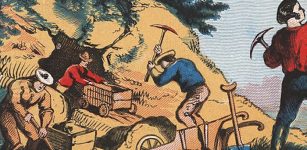 DNA Reveals Participants In California’s Gold Rush Dined On Salted Atlantic Cod
Archaeology | Jan 7, 2022
DNA Reveals Participants In California’s Gold Rush Dined On Salted Atlantic Cod
Archaeology | Jan 7, 2022 -
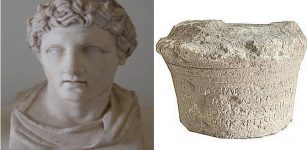 2,000-Year Old Engraved Kurdistan Tablet Referring To A Hellenistic Ruler Demetrius – Analyzed
Archaeology | Dec 14, 2020
2,000-Year Old Engraved Kurdistan Tablet Referring To A Hellenistic Ruler Demetrius – Analyzed
Archaeology | Dec 14, 2020 -
 Ancient DNA Sheds New Light On The Fall Of Major Civilizations
Archaeology | Aug 9, 2022
Ancient DNA Sheds New Light On The Fall Of Major Civilizations
Archaeology | Aug 9, 2022 -
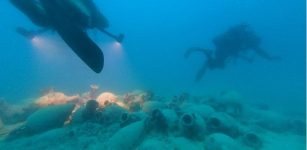 2,000-Year-Old Completely Preserved Shipwreck With Amphorae Found Near Šćedro Island
Archaeology | May 14, 2024
2,000-Year-Old Completely Preserved Shipwreck With Amphorae Found Near Šćedro Island
Archaeology | May 14, 2024 -
 Buddha Statues With Broken Arms, Legs And Without Heads Unearthed In Angkor Wat, Cambodia
Archaeology | Apr 22, 2020
Buddha Statues With Broken Arms, Legs And Without Heads Unearthed In Angkor Wat, Cambodia
Archaeology | Apr 22, 2020 -
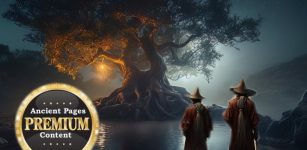 Mysterious Mythical Tree Connected To Strange Islands Found By Ancient Explorers
Featured Stories | Apr 13, 2024
Mysterious Mythical Tree Connected To Strange Islands Found By Ancient Explorers
Featured Stories | Apr 13, 2024 -
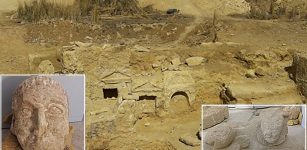 Remains Of Graeco-Roman Temple Discovered Near Egypt’s Siwa Oasis
Archaeology | Apr 6, 2018
Remains Of Graeco-Roman Temple Discovered Near Egypt’s Siwa Oasis
Archaeology | Apr 6, 2018 -
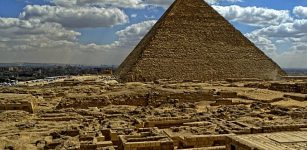 Secrets Of Cheops’ Pyramid: Does The Newly Found Chamber Contain An Iron Throne?
Archaeology | Jan 13, 2018
Secrets Of Cheops’ Pyramid: Does The Newly Found Chamber Contain An Iron Throne?
Archaeology | Jan 13, 2018 -
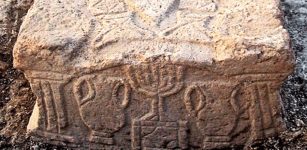 Rare 2nd Temple-Era Etchings Of Menorah And Cross Discovered In The Judean Hills
Archaeology | Jan 8, 2017
Rare 2nd Temple-Era Etchings Of Menorah And Cross Discovered In The Judean Hills
Archaeology | Jan 8, 2017

